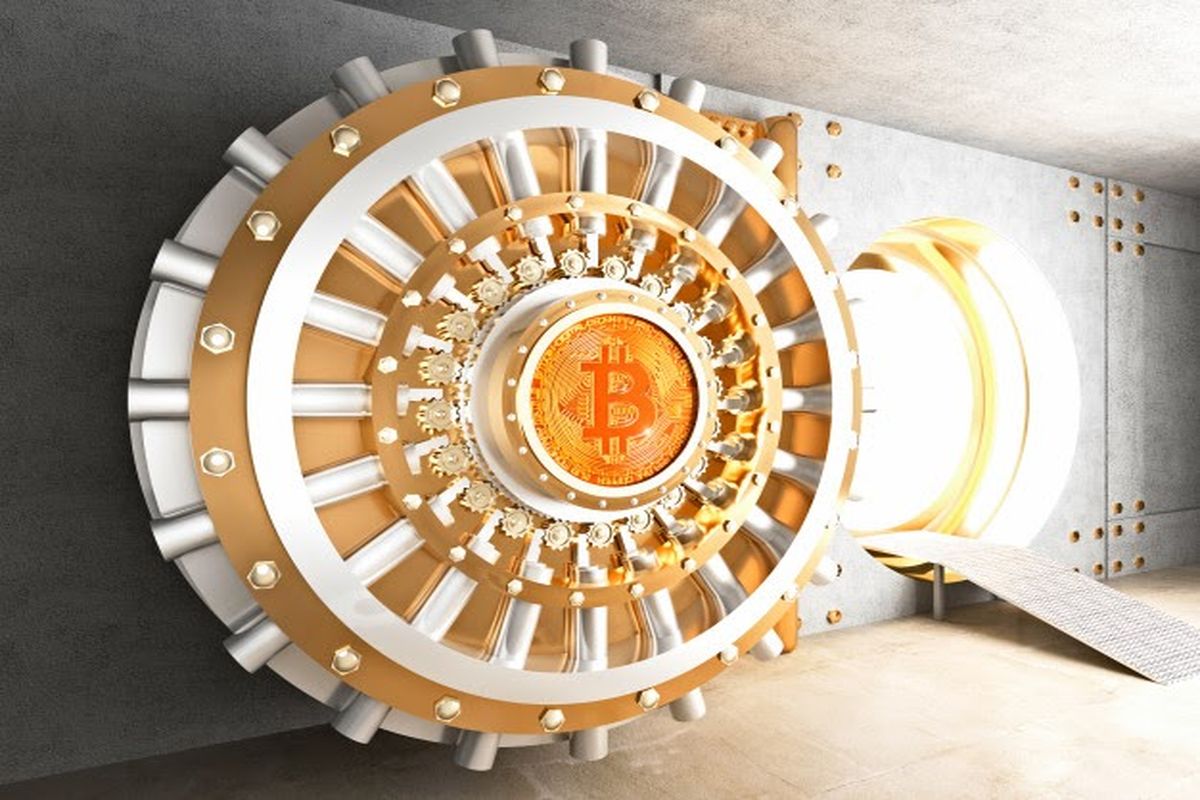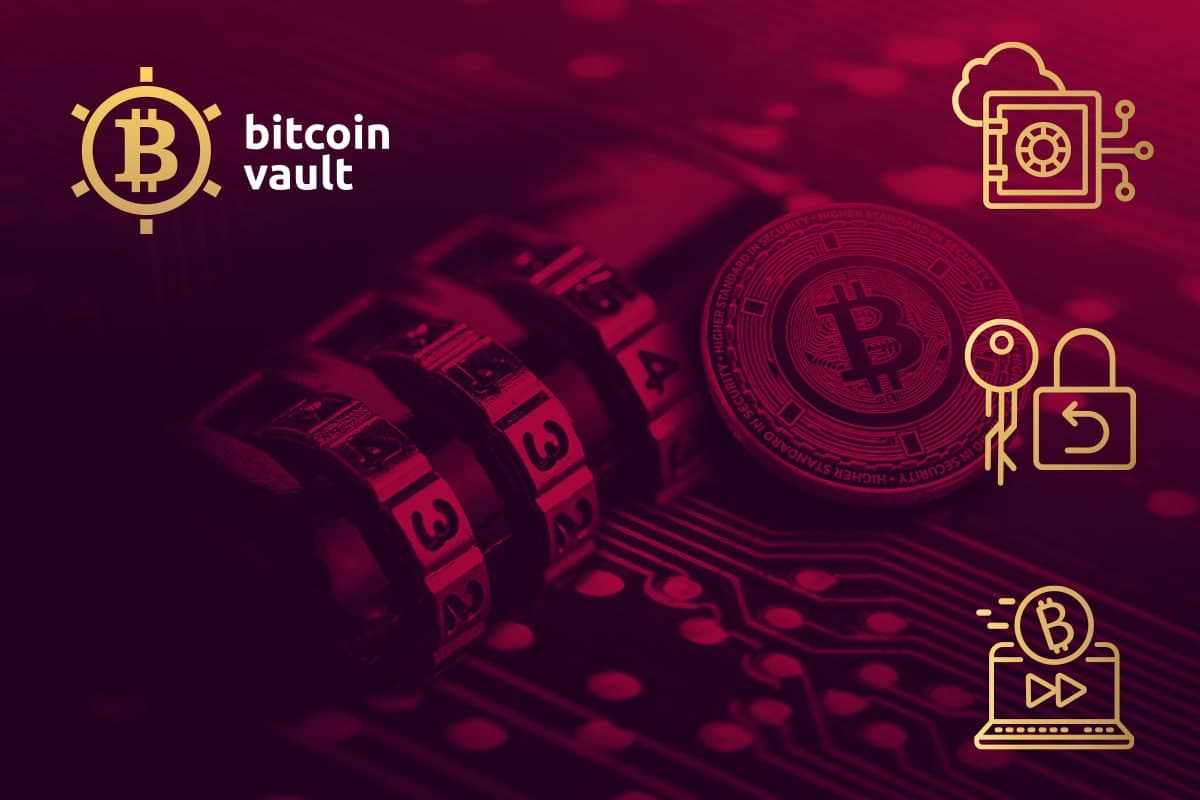After the introduction of Bitcoin (BTC), the decentralized financial network has gone through multiple upgrades in the form of forks. One of the hard forks that were performed on Bitcoin is the Bitcoin Vault (BTCV).
The Bitcoin Vault strived to offer users all the benefits that come with Bitcoin enhanced with extra security measures. Developers of the Bitcoin Vault created a platform where users can entirely control their funds without having to affect the flexibility of the crypto. Interestingly, Bitcoin Vault is the first crypto that enables users to cancel transactions posted to the blockchain within 24 hours.
As mentioned, Bitcoin Vault (BTCV) is a decentralized crypto that lets users reverse a transaction on the blockchain. It aims to secure users’ funds and solve the issues of crypto hacks, theft, errors, fraud, and bugs, among others.
Although Bitcoin Vault offers users the freedom to manage their assets, it is designed with an additional security layer. Particularly, Bitcoin Vault was designed with a 3-key security solution that lets users develop three Elliptic Curve Digital Signature Algorithm (ECDSA) keys.
Related: What Generates The Cryptocurrency Private Key?
The keys perform different roles in the BTCV network on pre-existing and new wallets. Notably, the three ECDSA keys are Cancel Transaction Key, Standard Transaction Key, and Fast Transaction Key. Standard Transaction Key lets users initiate and recover a wallet. Cancel Transaction Key allows users to cancel transactions within 24 hours. On the other hand, the Fast Transaction Key enables users to execute transactions in a few minutes.
The Bitcoin Vault developers have recently introduced a secure and safe feature to the blockchain space. They want the users to enjoy a space where they can experience unlimited transparency and freedom. Notably, they developed a crypto solution to address major issues faced by members of the crypto sector.
Some of these challenges include unauthorized access to the users’ wallets, inputting the wrong amount, sending cryptocurrency assets to the wrong wallet, and other errors, and bugs arising from crypto software. The blockchain has become a revolutionary chain (space) by reducing several challenges.
Unlike most of the other cryptos that were designed and developed on obsolete versions of Bitcoin, Bitcoin Vault was developed based on the original Whitepaper of Bitcoin Royale and has its whitepaper available on Github.
Being a more secure Bitcoin – it is an anti-theft solution for the real Bitcoin (BTC). In the past 8 years, crypto exchanges have fell victim to different hacking activities. Mt. Gox lost 650,000 Bitcoin in 2014, and Bitfinex lost 120,000 bitcoins in 2016.
Related: Hackers Have Looted More Bitcoin Than Satoshi’s Entire Stash
Also, the Bitcoin heist of 5,000 Bitcoin ($39 million) shut down Bitcoin7 in 2011. At the time, Bitcoin7 was the third largest exchange globally. But the heist hit them severely they never recovered. These security issues Bitcoin Vault helps resolve. It adds an extra layer of security to Bitcoin.
History And Roadmap Of Bitcoin Vault (BTCV)
Alpha chain of Bitcoin Vault (BTCV) was unleashed on December 12, 209. The mainnet of Bitcoin Vault went live on November 17, 2020, with a block height number of 58,420. So far, Bitcoin Vault has undergone four developmental stages, including pre-Alpha, Alpha, Beta, and Mainnet. In December 2020, BTCV Development Team unveiled a new roadmap that covered 2021 and 2022.
A group of Polish developers was responsible for the implementation of the hard fork. They offered the solution as a cure to the dangers of stolen, lost, or misplaced funds. Bitcoin Vault’s roadmap will cut across security upgrades, development upgrades, products, marketing activities, user experience upgrades, and other upgrades.
It consists of ledger integrations, wBTCV ERC-20 token, dApps development, decentralized finance (DeFi) ecosystem integration, penetrations, and full code audit. Other significant developments include security and scientific partnership, a website launch, bounty programs, hackathons, quantum research, and a lot more. The Bitcoin Vault developers aim to achieve every item listed on the Road Map beginning from the first quarter of 2021 to the end of 2022.
More BTCV developments have been divided into six workstreams: user experience upgrades, development upgrades, developing new products, security upgrades, conducting marketing activities, and many other activities.
The Underlying Technology
Bitcoin Vault utilizes a 144-delay block strategy to achieve the reverse feature of on-chain alert transactions. The Bitcoin Vault block network tweaked the life cycle of UTXOs (Unspent Transaction Output), and the alteration affected the transaction status, storage, and method of authentication.
As opposed to the standard of UTXO that has two states, the spent and unspent, Bitcoin Vault introduces a new state known as ‘confirmed’. Thus, the ‘confirmed’ status is the time interval between the removal of UTXO and the spending of UTXO. Furthermore, it records the details of the block height it was spent in.
As was expected, the system waits for a confirmed transaction alert before eliminating UTXO. The feature supports the confirmation of transfer before confirmation. It also impacts the balances visible to the users.
Related: Topl Founder Chris Georgen on Blockchain Growth and the UTxO Alliance
Bitcoin Vault is a Proof-of-Work coin developed using the Bitcoin Royale open-source code. BTCV implemented merged mining with Bitcoin, which was considerably easy since they both used the SHA-235 hash function. Currently, the Bitcoin Vault chain works as an auxiliary chain to BTC. Bitcoin’s PoW can authenticate Bitcoin Vault as an auxiliary proof-of-work (AuxPoW) consensus mechanism.
BTCV Ecosystem
In general, Bitcoin Vault provides three kinds of wallets. The Standard Wallet is the simplest and less secure. It is secured with just one key and supports the execution of standard transactions only. Another kind of wallet is the Two-key Vault, which is secured entirely by the Standard and Cancels transaction keys. Users can readily cancel transactions using the 2-Key Vault.
Finally, Bitcoin Vault supports a Three-key Vault which is ranked as the most secure wallet. All of the ECDSA keys of Bitcoin Vault secure the wallet, including Cancel Transaction Key, Standard Transaction Key, and Fast Transaction Key. Apart from that, users can execute fast and irreversible transactions on the next available block.
Moreover, users can trade, manage, and even store BTCV on three different applications: Key Generator, Gold Wallet, and Electrum Vault. The applications enable users to develop any of these wallets offered by Bitcoin Vault.
Gold Wallet is primarily an application that is designed only for mobile devices. The mobile application enables users to develop any of the three kinds of wallets to execute various transactions. The Gold wallet works as a two-factor authentication (2FA) for the Electrum vault.
The second application is the Key Generator. This web application lets users set up a wallet and perform transactions. It offers the utmost safety since the keys never leave the users’ devices and can just be stored offline.
Bitcoin Vault has a desktop application known as Electrum Vault. The main function of Electrum Vault is similar to the Gold Wallet. It can store, send, and receive BTCV, develop wallets, and execute transactions. The Gold Wallet can validate all transactions on the Electrum Wallets.
The users can join the ecosystem by registering on the website. It is advisable to choose an operating system, download the desired wallet, name the wallet and choose the preferred wallet type. After that, a person can develop and confirm a new seed, select a strong password, and then transfer Bitcoin Vault coins.
Apart from that, the website offers a tutorial video for all users to follow. Anybody with a question about the services of Bitcoin Vault can submit a ticket on the firm’s website or email the team. Notably, the firm is also active on all social media platforms, including Instagram, Twitter, Telegram, Facebook, and YouTube.
Benefits And Shortcomings
Bitcoin Vault (BTCV) provides some significant beneficial features in its plot to solve many crypto issues that arise from software malfunction or human errors. It gives users a wide range of wallet options, fast, and secure transactions, and rapid response to customer services. Moreover, this platform supports easy accessibility on desktop and mobile devices.
Related: This Revamped Idea for “Bitcoin Vaults” May End Exchange Hacks for Good
Nevertheless, there are several red flags on this platform. There is no guarantee offered for the safety of invested funds on the platforms. Recently, rug pulls have become a common illegal activity in the crypto world. Moreover, Bitcoin Vault lacks transparency, since there is no record of day-to-day trading operations. Some critics speculate that Bitcoin Vault might have some hidden fees.
The Takeaway
The Bitcoin blockchain has constantly evolved since the discovery and implementation of the fork mechanism. A reversible blockchain like Bitcoin Vault will serve as an important tool in crypto. Henceforth, users will not need to panic whenever a wrong or illicit transaction is executed.
Although there are security issues with the platform, the blockchain concept is thoughtful and effective.











